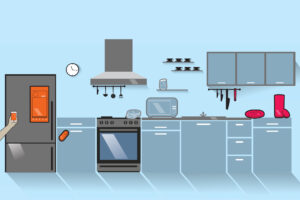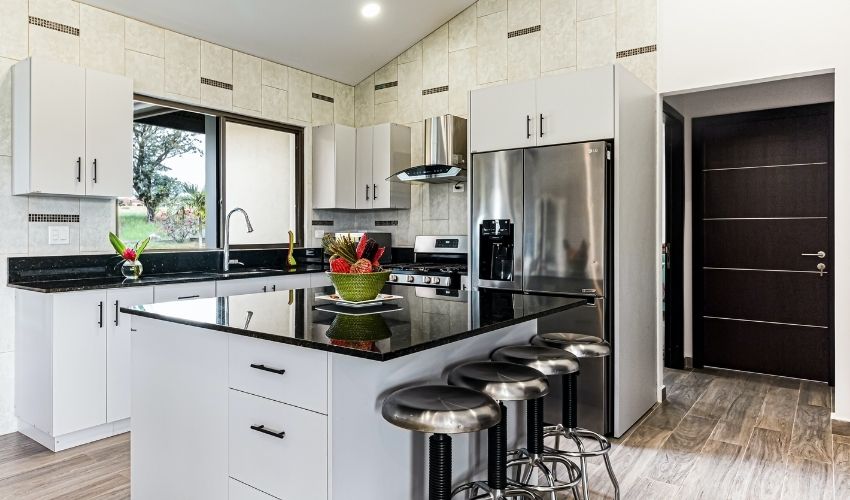How Do I Start a Smart Kitchen?

Are you ready to turn your kitchen into a cutting-edge smart space? Starting a smart kitchen can be an exciting and practical endeavor. With the right devices and technology, you can streamline tasks, enhance your cooking experience, and create a more efficient and connected kitchen. In this article, we will explore the steps and considerations to help you get started on your smart kitchen journey.
Introduction: Embracing the Future of Kitchen Technology
As technology continues to advance at an unprecedented pace, our homes are becoming smarter and more interconnected. The kitchen, often considered the heart of the home, is no exception. A smart kitchen harnesses the power of technology to make your cooking and meal preparation experience more convenient, efficient, and enjoyable.
Step 1: Assess Your Needs and Set a Budget
Before diving into the world of smart kitchen devices, it’s important to assess your needs and determine how much you are willing to invest. Consider the tasks you find most time-consuming or repetitive in the kitchen. Do you struggle with meal planning, grocery shopping, or cooking techniques? Identifying these pain points will help guide your decisions and prioritize the features you require in your smart kitchen devices.
Additionally, set a budget that aligns with your financial capabilities. While there is a wide range of smart kitchen gadgets available, it’s essential to determine a realistic spending limit to avoid overspending.
Step 2: Choose a Central Hub

A central hub is the brain of your smart kitchen, connecting and controlling various devices. There are several options available, such as voice-controlled assistants, smart displays, or dedicated smart kitchen hubs. These hubs typically offer voice commands, touchscreen interfaces, and integration with other smart home devices.
Consider your preferred method of control and compatibility with other existing smart devices in your home when selecting a central hub. Popular choices include Amazon Echo Show, Google Nest Hub, and Apple HomePod.
Step 3: Upgrade Your Appliances
One of the key aspects of a smart kitchen is upgrading your appliances with smart and connected counterparts. Start with appliances that you frequently use or those that can provide significant convenience and efficiency improvements.
Smart refrigerators can notify you when items are running low, suggest recipes based on existing ingredients, and even share their contents through smartphone apps. Smart ovens offer precise temperature control, remote operation, and integration with recipe apps.
Other smart appliances to consider include dishwashers, coffee makers, and sous vide devices. Opt for appliances that align with your cooking habits and lifestyle.
Step 4: Install Smart Lighting and Power Management
Smart lighting systems can enhance your kitchen’s ambiance, provide task-specific illumination, and save energy. Install smart light bulbs or light strips that can be controlled through your central hub or smartphone. Dimmable options and color-changing capabilities can create different moods for various occasions.
In addition to lighting, explore power management solutions to control and monitor your kitchen’s energy usage. Smart power strips and outlets allow you to remotely turn devices on and off, set schedules, and track energy consumption. This not only adds convenience but helps reduce energy waste and lowers your electricity bills.
Step 5: Integrate Smart Assistants and Voice Control
Smart assistants and voice control play a vital role in a smart kitchen. They allow you to control your devices, search for recipes, set timers, convert measurements, and answer cooking-related questions, all with voice commands.
Ensure that your chosen central hub supports your preferred smart assistant, whether it be Amazon Alexa, Google Assistant, or Apple Siri. Integrate it seamlessly into your smart kitchen ecosystem for a hands-free and efficient experience.
Conclusion: Embrace the Future of Kitchen Technology

Starting a smart kitchen requires careful planning, consideration, and investment. By assessing your needs, setting a budget, and selecting the right devices, you can transform your kitchen into a futuristic space that enhances your cooking experience and simplifies your daily culinary activities.
So, how do you start a smart kitchen? Begin by understanding your needs, setting a budget, choosing a central hub, upgrading your appliances, installing smart lighting and power management, and integrating smart assistants and voice control. Enjoy the convenience, efficiency, and joy that a smart kitchen brings to your everyday life!


